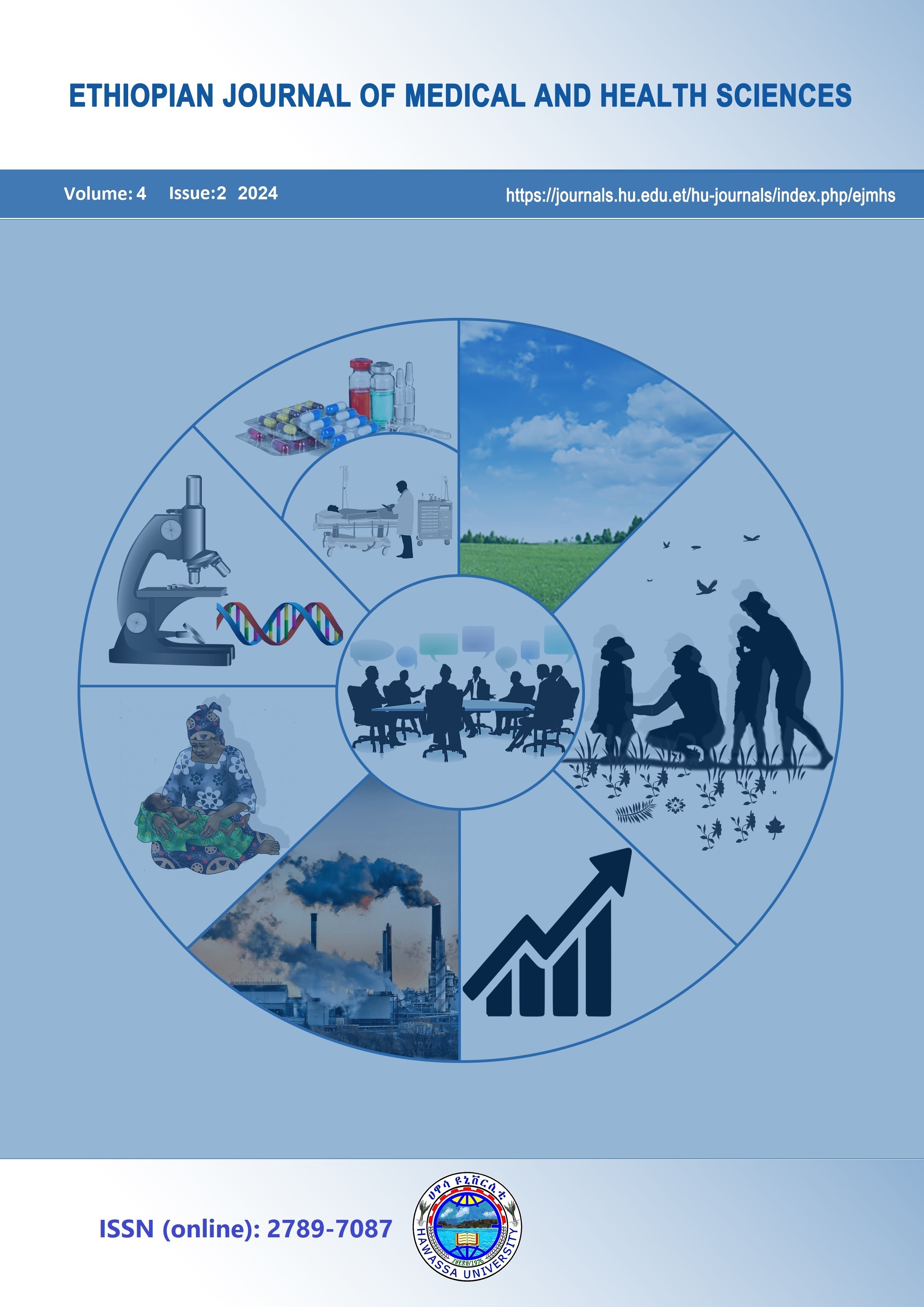Knowledge, practice and associated factors of obstetric care providers towards neonatal resuscitation in Hawassa city public health institutions. A cross-sectional study
DOI:
https://doi.org/10.82127/2xw7ym33Keywords:
Neonatal resuscitation, Knowledge, practice, obstetric care providers EthiopiaAbstract
Background: Neonatal mortality reduction remains a significant challenge in Ethiopia. Neonatal resuscitation is one of the proven interventions to manage neonatal asphyxia, a well-known cause of neonatal death. However, there are concerns about obstetric care providers’ knowledge and skill in performing neonatal resuscitation. Therefore, this study aimed to assess knowledge, practice, and associated factors of obstetric care providers towards neonatal resuscitation in Hawassa city public health institutions.
Methods: An institution-based cross-sectional study was conducted among 191 obstetrics care providers from May 01-30/2024. The data were collected through face-to-face interviews and observation using a pre-tested, structured, observational checklist. A binary logistic regression analysis model was considered to analyze the data. The adjusted odds ratio (AOR) with a 95% confidence interval (CI) was used to report the measures of association.
Result: In this study, a total of 191 obstetric care providers participated. Among participants, 16.2% (95% CI:10.9: 21.6%) had good neonatal resuscitation knowledge, while 9.9% (95% CI: 5.7%, 14.7%) of obstetric care providers had adequate skills in neonatal resuscitation. Having a diploma level education (AOR = 0.09; 95% CI: 0.01, 0.58), having a Bachler of science degree level education (AOR = 0.0.21; 95% CI: 0.06, 0.77) and the availability of a neonatal resuscitation algorithm or guideline (AOR = 3.46; 95% CI: 1.1, 10.86) were factors associated with neonatal resuscitation knowledge. Additionally, neonatal resuscitation skill was significantly associated with neonatal resuscitation knowledge (AOR = 4.62; 95% CI: 1.27, 14.30).
Conclusion: The neonatal resuscitation knowledge and skills of obstetric care providers in Hawassa city are notably low. To improve this, obstetric care providers should be encouraged to pursue further education, and neonatal resuscitation guidelines and algorithms should be made readily accessible, ideally posted on facility walls, to enhance obstetric care providers' knowledge.

